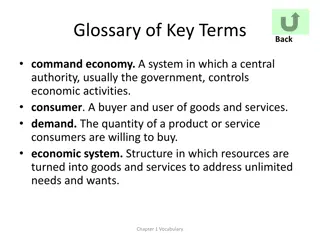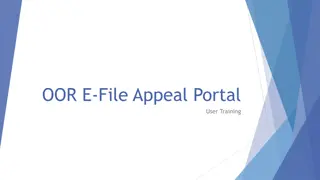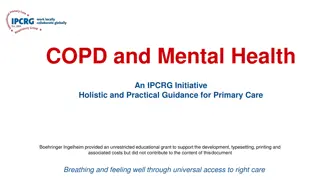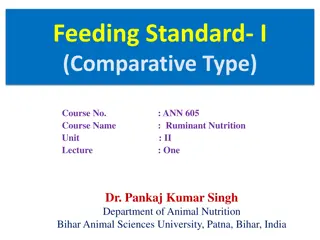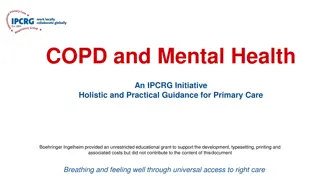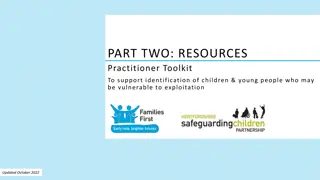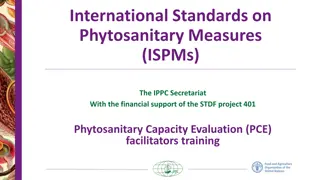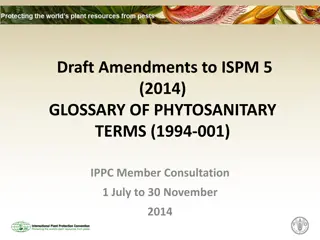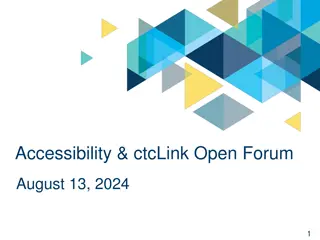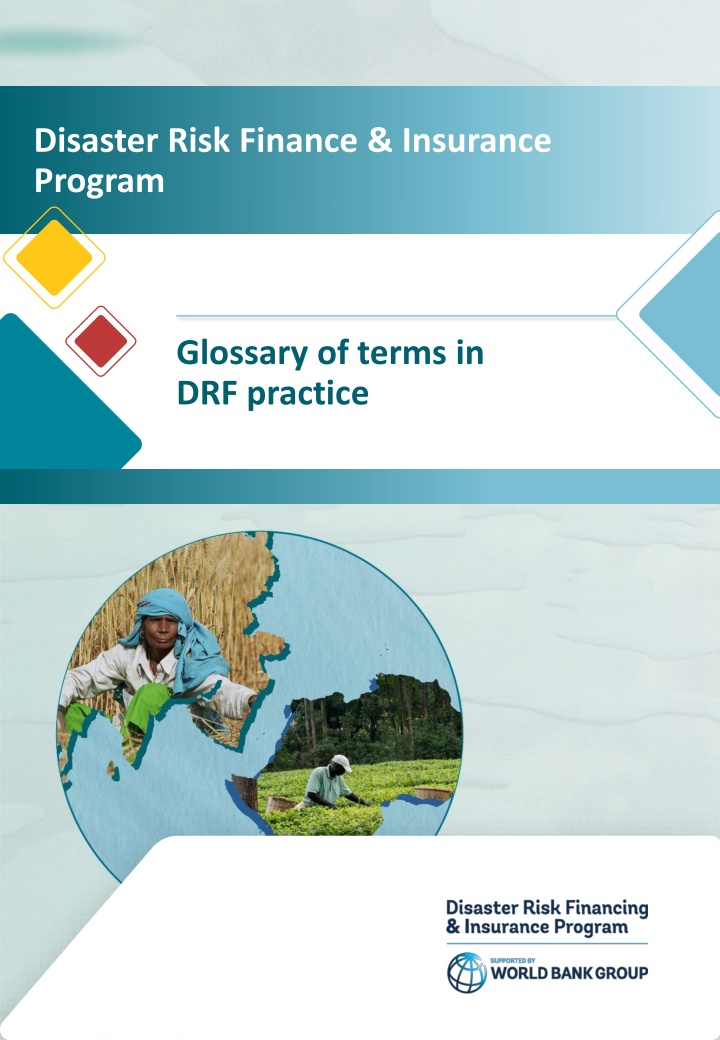
Disaster Risk Finance Insurance Program Glossary of Terms in DRF Practice
Explore the glossary of terms in Disaster Risk Finance & Insurance Program practice, including definitions like Average Annual Loss, Budget Allocation, Capital Market Instrument, and more. Understand how Disaster Risk Finance strategies aim to minimize financial shocks from natural hazards and protect vulnerable populations.
Download Presentation

Please find below an Image/Link to download the presentation.
The content on the website is provided AS IS for your information and personal use only. It may not be sold, licensed, or shared on other websites without obtaining consent from the author. If you encounter any issues during the download, it is possible that the publisher has removed the file from their server.
You are allowed to download the files provided on this website for personal or commercial use, subject to the condition that they are used lawfully. All files are the property of their respective owners.
The content on the website is provided AS IS for your information and personal use only. It may not be sold, licensed, or shared on other websites without obtaining consent from the author.
E N D
Presentation Transcript
Disaster Risk Finance & Insurance Program Glossary of terms in DRF practice
Glossary of terms Term Proposed Definition(s) The average of expected (or potential) loss over a period of many years; calculated as the sum of all expected/simulated losses over a period of time, divided by the number of years. Also known as Annual Expected Loss (AEL) Average Annual Loss (AAL) Budget Allocation An amount of funding set aside to cover specific planned expenditures. The process of moving appropriated funds from an existing budget category to another without increasing the total budget; can be used as a budget mechanism to finance disaster-related costs. Budget Reallocation A financial instrument, in the form of debt or equity, that is traded on a securities exchange or directly between investors and borrowers; a capital market instrument is structured in the same way as reinsurance, except with investors rather than insurers, providing the protection; it can be used to finance disaster-related costs. Examples are catastrophe bonds and catastrophe swaps. Capital Market Instrument Captive Insurance The arrangement whereby a subsidiary company provides insurance or reinsurance for its parent/owner. A high-yielding, insurance-linked security providing for payment of interest and/ or principal to be suspended or canceled in the event of a specified catastrophe, such as an earthquake of a certain magnitude or above that occurs within a predefined geographical area. Catastrophe Bond (CAT Bond) Catastrophe Model (CAT Model) A computerized model that generates a set of simulated events to calculate losses arising from a catastrophe. A financial tool that provides governments with immediate access to funds following disaster events to enable a more rapid and efficient response. This type of funding is typically used to finance losses caused by recurrent natural disasters. A line of contingent credit is an ex ante instrument that allows borrowers to prepare for a natural disaster by securing access to financing before a disaster occurs. Contingent Credit A potential payment obligation (or future expenditure) that may be incurred, depending on the outcome of a future event; in the case of disaster risk for governments, the expenditure may be to pay for emergency response or reconstruction in the event of a natural hazard impact Contingent Liability Coverage Limit The maximum payout under an insurance policy. The replacement value of physical assets wholly or partly destroyed, built to the same standards that prevailed prior to the disaster. Damage occurs during and immediately after the disaster and is measured in physical units. Its monetary value is expressed in terms of replacement costs according to prices prevailing just before the event. Damage Cost
Glossary of terms Term Proposed Definition(s) The field of practice that focuses on managing the financial shocks due to natural hazards with the aim to increase the financial resilience of governments and to protect the livelihoods of the most vulnerable populations; DRF helps to minimize the costs to finance related expenditures and optimize the timing to meet post-disaster funding needs without compromising development goals, fiscal stability or wellbeing. The financial protection of populations against disaster events. Disaster risk finance strategies increase the ability of national and local governments, homeowners, businesses, agricultural producers, and low-income populations to respond more quickly and resiliently to disasters. Disaster Risk Finance (DRF) Disaster Risk Management (DRM) The systematic process of using administrative directives, organizations, and operational skills and capacities to implement strategies, policies, and improved coping capacities in order to lessen the adverse impacts of hazards and the possibility of disaster. The concept and practice of reducing disaster risks through systematic efforts to analyze and manage the causal factors of disasters, including through reduced exposure to hazards, reduced vulnerability of people and property, wise management of land and the environment, and improved preparedness for adverse events. Disaster Risk Reduction (DRR) A rate used to calculate present values of future cash flows. For example, with a discount rate of 5 percent, $1.05 in one year is equivalent to $1 at present. Discount Rate Having different levels of risk and/or types of risk in different areas, so that if one area is affected by an event, other (unaffected) areas can provide support. In the case of small Pacific island states, this is difficult as a hazard event typically affects the whole country and/or several neighboring countries, meaning there are no unaffected areas from which support can be provided. Diversification of Risk Latin for "from before". In the context of disaster events, ex ante instruments are arranged, and ex ante decisions are made before an event takes place. Ex ante Latin for "from after". In the context of disaster events, ex post instruments are arranged, and ex post decisions are made after an event takes place. Ex post The sum of the values of all possible losses, each multiplied by the probability of that loss occurring or the estimated loss frequency multiplied by the estimated loss severity, summed for all exposures. Expected Losses Explicit Liabilities Explicit liabilities underpinned by some form of legal obligation, for example state guaranteed debts Exposure People, property, assets, systems, or other elements that are subject to potential losses.
Glossary of terms Term Proposed Definition(s) The difference between general government revenues and expenditures. When revenues exceed expenditure there is a fiscal surplus. When expenditure exceeds revenue there is a fiscal deficit. The ideal fiscal balance is zero - where revenue and expenditure are equal. Fiscal Balance The difference between the total funds required and available funds that a government has or can access; in DRF terms, this could be used to describe the difference between disaster-related contingent liabilities and the financing available from disaster-related financial instruments. Fiscal Funding Gap Frequency is often used to describe how often an event is likely to occur. Events with low frequency are rare (i.e. they have a low likelihood of occurring). Events with a high frequency are common (i.e. they have a high likelihood of occurring). Frequency Hazard (peril/natural hazard) Natural process or phenomenon, or human activity that has the potential to cause property damage, loss of livelihoods and services, social and economic disruption, and/or environmental degradation. Also known as peril or natural hazard. In general terms, the aid and action, designed to save lives, alleviate suffering, and maintain and protect human dignity during and after man-made crises and natural disasters. Such aid may also be used to prevent and strengthen preparedness for the occurrence of such situations. An insurance policy that pays claims based on the actual economic losses incurred by the policyholder. Humanitarian Aid Indemnity Insurance An insurance policy that pays claims based on an index, indexes are typically chosen to be a good proxy for the economic losses incurred by the policyholder. A practice or arrangement by which a company, investor or government agency provides a guarantee of compensation for a specified loss, damage or event occurring in return for payment of a specified premium. The event that must occur before a particular insurance policy applies to a given loss and causes the policy to pay out; for example, for weather-index insurance a trigger could be the weather measurement that causes the insurance policy to pay out, such as a certain amount of cumulative rainfall. Liquidity is a measure of the amount of cash or liquid assets (i.e. assets that can be quickly turned into cash) available to an individual or organization. Index Insurance Insurance Trigger Liquidity The foregone economic flows resulting from the temporary absence of the damaged assets and/or any other disruption of economic activity caused by the disaster. Loss An extreme event leading to loss of lives and livelihoods caused by natural hazards such as tropical cyclones, earthquakes, floods, and landslides. Operational (or operating) budget is the part of the budget that includes day-to-day running costs of an organization, such as travel and consumables. Wages and staff benefits are part of the operational budget but are ring-fenced and cannot be reallocated. Natural Disaster Operational Budget
Glossary of terms Term Proposed Definition(s) Opportunity Cost The cost of an alternative use of the finance that must be forgone in order to pursue a certain strategy. A type of insurance that is triggered by the occurrence of a specific measured hazard event, such as a certain magnitude of earthquake or category of cyclone. This parametric approach is common for catastrophe risk insurance to cover against major hazard events and is an alternative to Indemnity Insurance. Parametric Insurance A payout refers to the amount of liquidity that an insured party will receive following an eligible event. Payout The premium is the cost that an insured party will pay for a given level of coverage: the more that is included in the coverage provided, the higher the premium will be; premiums are determined by the amount of coverage a country chooses, the event attachment point and exhaustion point of that coverage, and the risk profile of the insured party, such as a country in the case of sovereign parametric insurance. Premium (Ins.) Probabilistic Modeling The process of fitting historical risk data into a probability model to predict future contingent liabilities. Probable Maximum Loss (PML) The largest loss believed to be possible for a certain type of event in a defined return period, such as 1 in 100 years or 1 in 250 years. Public Financial Management (PFM) Steps taken to ensure that public money is spent and accounted for in a clear and transparent fashion. A public financial management system comprises resource generation, resource allocation, and expenditure management (resource A practice in which insurers transfer portions of risk portfolios to other parties in order to reduce the likelihood of having to pay a large obligation resulting from an insurance claim; it is the insurance of insurance. Reinsurance helps to smooth extreme results (such as those from catastrophe events) and, therefore, to reduce the volatility of an insurance portfolio. Reinsurance The risk that remains in unmanaged form, even when effective disaster risk reduction measures are in place, and for which emergency response and recovery capacities must be maintained. The presence of residual risk implies a continuing need to develop and support effective capacities for emergency services, preparedness, response, and recovery together with socioeconomic policies such as safety nets and risk transfer mechanisms. Residual Risk Resilience in the context of disasters is the ability of countries, communities and households to manage change, by maintaining or transforming living standards in the face of shocks or stresses - such as earthquakes, drought or violent conflict - without compromising their long-term prospects. Resilience
Glossary of terms Term Proposed Definition(s) An indication of the likelihood of an event occurring; a recurrence interval demonstrating how frequently an event is expected to occur; For example, an event or a loss with a return period of five years is statistically expected to recur every five years on average over an extended period of time (or has a 20 percent probability of occurrence). Return Period The process of separating risk into tiers to allow for more efficient financing and management of risks. Risk Layering The aggregation of individual risks to manage the consequences of independent risks. Risk pooling is based on the law of large numbers. Risk Pool The process whereby a party retains the financial responsibility for loss in the event of a shock Risk Retention The process of shifting the burden of financial loss or responsibility for risk financing to another party, through insurance, reinsurance, legislation, or other means. Risk Transfer Risk-Based Pricing Pricing of an insurance policy to reflect the expected financial value of the underlying risk that is transferred through the insurance contract. Sovereign Catastrophe Risk Pool A group of countries that collaborate to manage financial risk as a single group (see also risk pool) The process of issuing an insurance policy, thereby accepting a liability and guaranteeing payment in case a loss occurs. Underwriting Characteristics and circumstances of a community, system, or asset that make it susceptible to the damaging effects of a hazard. Vulnerability


